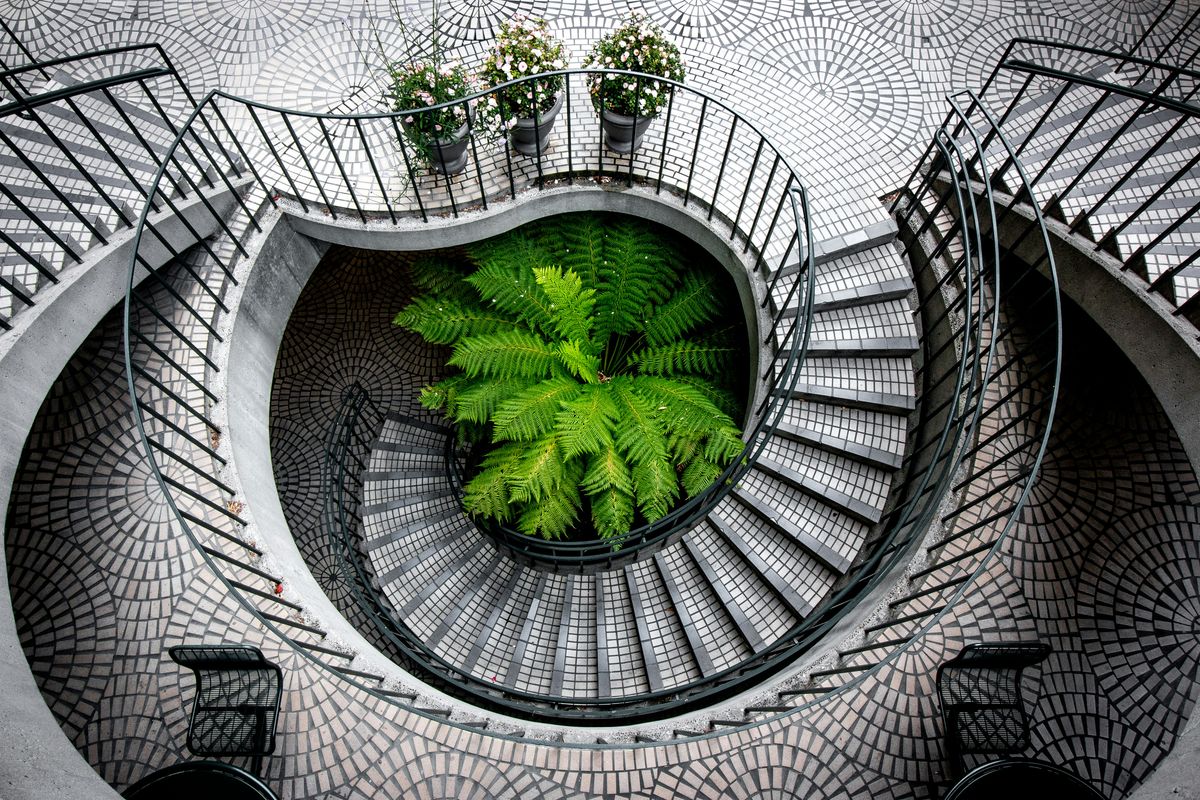Silver Buttonwood, with its shimmering silver leaves and coastal charm, is a standout feature in coastal landscapes. Discover the unique features, where to find it, and why it stands out. Learn about caring for your Silver Buttonwood with watering tips, pruning techniques, and pest protection. Explore how to create coastal vibes, complement other plants, and design with light in your landscaping projects featuring Silver Buttonwood.
Key Takeaways
- Silver Buttonwood adds a touch of elegance to coastal landscapes with its shimmering silver leaves.
- Proper watering is essential for the health and vitality of Silver Buttonwood plants.
- Regular pruning helps maintain the desired shape and size of Silver Buttonwood.
- Protecting Silver Buttonwood from pests ensures its long-term health and beauty.
- Incorporating Silver Buttonwood in your landscaping design can enhance the coastal ambiance and create a harmonious plant arrangement.
Discovering the Silver Buttonwood

The Unique Features
The Silver Buttonwood truly is a botanical gem, shimmering with a distinctive silvery-gray foliage that captures the eye. Its leaves, coated with fine, silvery hairs, reflect sunlight, creating a luminous effect that’s hard to miss. This plant isn’t just about looks, though; it’s a hardy survivor, thriving in the salty and windy conditions that would spell doom for less resilient flora.
Much like the Clusia shrubs that are a hit in South Florida for their beauty, adaptability, and low maintenance, the Silver Buttonwood stands out for similar reasons. It’s not just a pretty face; it’s a practical choice for coastal gardeners. Here’s a quick rundown of its standout features:
- Drought tolerance: Once established, it requires minimal watering.
- Salt resistance: Ideal for seaside landscapes.
- Pest resilience: Fewer worries about plant health.
Whether you’re looking to add some sparkle to your garden or need a reliable plant that can handle the seaside environment, the Silver Buttonwood is a top contender. And if you’re planning a magical evening, imagine the ambiance it could add to a setting like the Wonderdays’ Dinner River Cruise in London, with its enchanting views complemented by the subtle glow of these unique trees.
Where to Find It
The Silver Buttonwood, with its silvery leaves and hardy nature, is a coastal gem that’s not just limited to the wild. You can find this shimmering beauty at local nurseries and specialty plant shops, particularly in areas close to its natural habitat. For instance, Wilcox Nursery in Largo and St. Petersburg offers a variety of Silver Buttonwoods for sale. They highlight that the plant thrives in full sun and serves multiple landscape functions, from an accent piece to a screening plant.
When searching for a Silver Buttonwood, it’s essential to look for reputable sources that provide healthy plants and good advice on their care. Many nurseries have informative websites with additional resources, such as social media links and helpful gardening tips. Always check for a comprehensive ‘About’ section and clear contact information to ensure you’re dealing with a trustworthy vendor.
Here’s a quick checklist to guide you through the buying process:
- Look for nurseries with a good selection of Silver Buttonwoods.
- Ensure the plant has been grown in conditions similar to your local environment.
- Check for a well-maintained website with resources and contact information.
- Read customer reviews and comments to gauge the quality of service and plants.
Remember, the right nursery will not only sell you a plant but also provide the support you need to help it thrive in your landscape.
Why It Stands Out
The Silver Buttonwood, or Conocarpus erectus ‘Sericeus’, isn’t just another pretty face in the coastal flora lineup. Its resilience and versatility make it a standout choice for gardeners and landscapers alike. Here’s why:
- Silver-gray, small oval leaves that shimmer in the sunlight, giving this plant its distinctive silvery appearance.
- A natural warrior against coastal challenges, being tolerant of salt spray and thriving in sandy soils.
- Its low-maintenance nature means less work and more enjoyment for you.
Whether you’re aiming for a formal or informal vibe, the Silver Buttonwood slots in seamlessly. It’s as much at home serving as an elegant accent as it is being the backbone of a garden design. And let’s not forget, this plant is a low-maintenance charmer, which means you can spend less time fussing and more time basking in the beauty of your outdoor space.
Caring for Your Silver Buttonwood

Watering Tips
Keeping your Silver Buttonwood thriving means getting the watering just right. These plants love the sun and require well-drained soil to prevent root rot. Overwatering is a common mistake, so let’s keep it simple with a few guidelines:
- Water deeply but infrequently to encourage strong root growth.
- Allow the soil to dry out between waterings; this isn’t a plant that likes wet feet!
- Young trees need more frequent watering as they establish, but once mature, they’re quite drought-tolerant.
Remember, the Silver Buttonwood’s need for full sun and fast drainage is crucial for its health. Inadequate sunlight can lead to issues like leaf drop, so make sure your tree gets plenty of rays!
Pruning Techniques
Pruning your Silver Buttonwood isn’t just about keeping it looking sharp; it’s about encouraging healthy growth and maintaining the tree’s natural shimmer. Prune during the dormant season to minimize stress on the tree and to easily spot any dead or diseased branches.
Here’s a quick guide to get you started:
- Identify any branches that are dead, damaged, or diseased.
- Cut these branches at the node, where one branch meets another.
- Shape the tree gently, keeping its natural form in mind.
- Clean your tools after each cut to prevent the spread of disease.
Remember, the Silver Buttonwood is a champ at handling coastal conditions and doesn’t need much trimming. Just a little off the top now and then to keep it looking its best!
Protecting from Pests
Keeping your Silver Buttonwood healthy means being vigilant about pests. Regular monitoring is key to early detection and control. Look out for common culprits like aphids, which can quickly infest leaves and stems, sucking the life out of your shimmering beauty.
When it comes to pest control, a gentle approach is often best. Insecticidal soaps can be effective against a range of invaders without harming the plant or beneficial insects. Here’s a quick guide on what to watch for and how to respond:
- Aphids: These sap-suckers can cause serious damage if left unchecked. Use a soft cloth or a hose to gently remove them, or apply insecticidal soap as needed.
- Scale insects: Look for these tiny pests on the underside of leaves. They can be scraped off manually or treated with horticultural oil.
- Spider mites: These arachnids thrive in dry conditions. Increase humidity and wash the plant with water to deter them.
Remember, the best defense is a good offense. Keep your Silver Buttonwood in optimal health with proper watering, sunlight, and nutrition, and it’ll be better equipped to fend off any pesky invaders.
Landscaping with Silver Buttonwood

Creating Coastal Vibes
The Silver Buttonwood is your go-to plant for that effortless, breezy coastal look. Its silvery leaves reflect the sunlight, creating a luminous effect that’s both calming and captivating. Incorporate it near walkways or patios where its shimmer can be fully appreciated.
When designing your coastal landscape, consider the practicality of each plant’s placement. Silver Buttonwoods are not just about looks; they’re also champions at handling tough coastal conditions. Here’s a quick list to ensure you’re on the right track:
- Position Silver Buttonwoods to shield more delicate plants from salt spray.
- Use them as natural windbreaks to protect your outdoor living spaces.
- Pair with other drought-tolerant plants for a low-maintenance garden that thrives in sandy soils.
Remember, creating a coastal vibe goes beyond the plants. Enhance your landscaping with decorative ideas using rocks around your Silver Buttonwoods. Not only do they add to the aesthetics, but they also help with water management, ensuring your Silver Buttonwoods get just the right amount of moisture without waterlogging.
Complementing Other Plants
The Silver Buttonwood is a true team player in the garden, mingling effortlessly with a variety of other plants. Its silvery foliage provides a stunning contrast that can enhance the greenery of companion plants. When pairing with others, consider the Silver Buttonwood’s love for the sun and its salt-tolerant nature.
Here’s a quick guide to some plant buddies that thrive alongside the Silver Buttonwood:
- Philodendron Gloriosum: This tropical beauty loves humidity, making it a lush underplanting that benefits from the Buttonwood’s light shade.
- Sea Grape: With its broad leaves, the Sea Grape stands up to coastal winds, just like the Buttonwood.
- Beach Sunflower: This sun-loving groundcover adds a splash of yellow and thrives in the same sandy soils.
Remember, strategic placement is key. Position your Silver Buttonwood where it can provide shelter and contrast to these companions, creating a harmonious and low-maintenance landscape that’s as functional as it is beautiful.
Designing with Light
When it comes to designing with light, the Silver Buttonwood truly shines. Its silvery leaves reflect sunlight, creating a luminous effect that can brighten up any garden space. By strategically placing these trees, you can play with light and shadow to create a dynamic landscape.
Consider the following tips to maximize the light-reflective properties of the Silver Buttonwood:
- Position them where they’ll catch the morning or late afternoon sun for a subtle glow.
- Use them to frame a path or seating area, where their shimmering leaves can be fully appreciated.
- Pair with darker foliage plants to create a striking contrast that highlights the Silver Buttonwood’s unique coloration.
Remember, the key to a successful design is balance. Too much light reflection can be overwhelming, so mix in some Green Buttonwood for a softer, more varied texture. And don’t forget to let your creativity shine, just like you would when transforming a space with decorative lighting or artwork.
Frequently Asked Questions
What makes the Silver Buttonwood unique?
The Silver Buttonwood stands out due to its shimmering silver foliage and its ability to thrive in coastal landscapes.
Where can I find the Silver Buttonwood?
You can find the Silver Buttonwood in coastal regions, particularly in areas with sandy soil and ample sunlight.
How do I care for my Silver Buttonwood in terms of watering?
Water your Silver Buttonwood regularly, ensuring the soil is moist but not waterlogged to promote healthy growth.
What pruning techniques are recommended for the Silver Buttonwood?
Prune your Silver Buttonwood to maintain its desired shape and remove any dead or overgrown branches for optimal health.
How can I protect my Silver Buttonwood from pests?
Protect your Silver Buttonwood from pests by regularly inspecting the foliage, using insecticidal soap if necessary, and promoting overall plant health.
How can I create coastal vibes with the Silver Buttonwood in landscaping?
You can create coastal vibes by pairing the Silver Buttonwood with other coastal plants, incorporating beach-themed elements, and utilizing a color scheme inspired by the sea.
